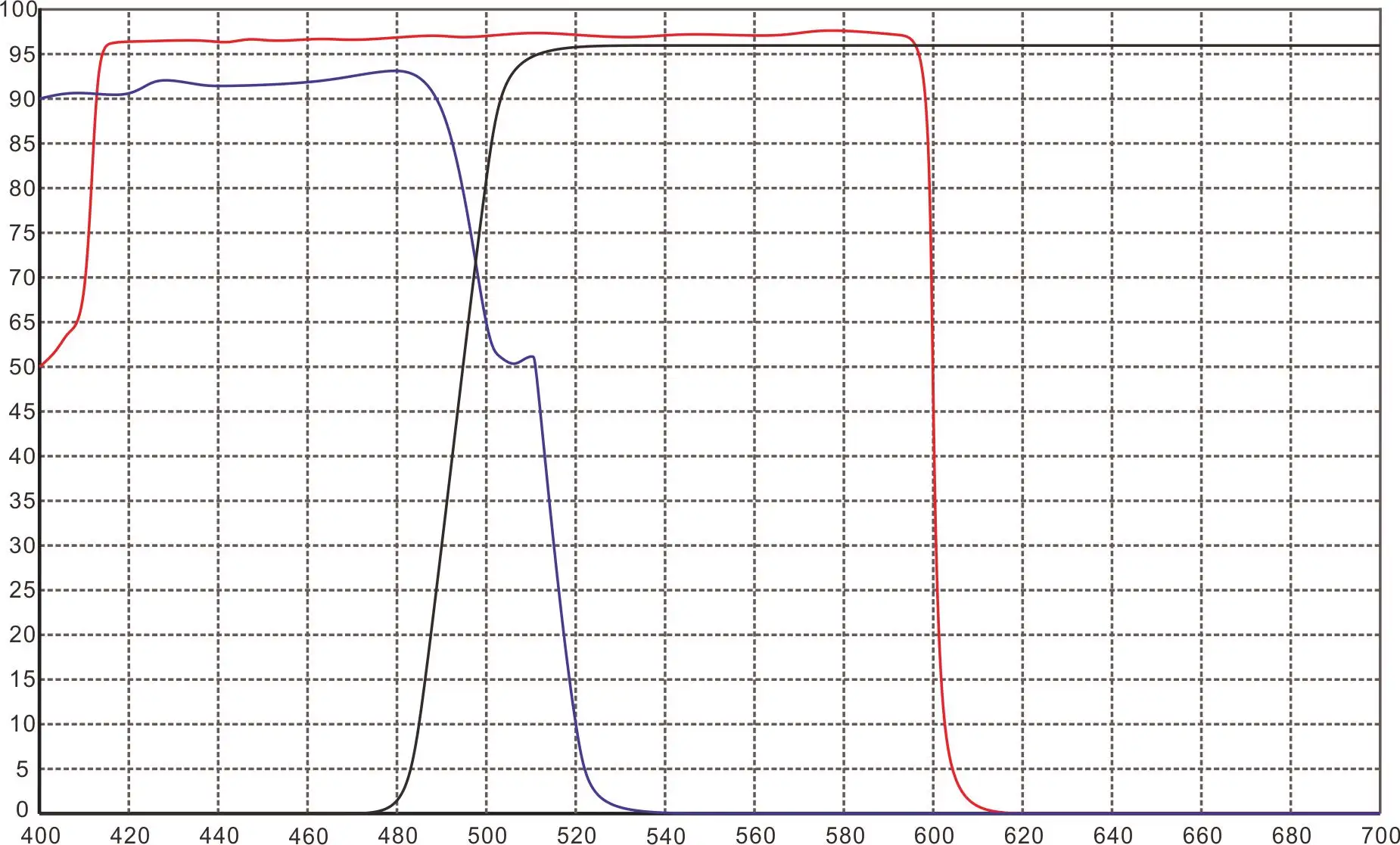en
Dichroic filters are highly precise optical components designed to selectively transmit specific wavelengths of light while reflecting others within a narrow range. Unlike dichroic mirrors, which are characterized by the color of light they reflect, dichroic filters focus on the color of light they allow to pass through. These filters remove unwanted wavelengths from white light sources to produce light that appears highly saturated to the human eye.
Dichroic mirrors, often referred to as cold mirrors, are commonly used behind light sources to reflect visible light forward while allowing infrared light to pass through the back of the fixture. This design achieves bright illumination while reducing heat, making them ideal for applications such as quartz halogen lamps, slide projectors, and modern indoor lighting. However, their use in enclosed fixtures can pose fire hazards due to infrared radiation, requiring alternative non-cool beam lamps for such scenarios.
Dichroic filters operate on the principle of thin-film interference, akin to the colored patterns seen in oil films on water. By layering alternating optical coatings with different refractive indices on a glass substrate, these filters create phase reflections that selectively enhance certain wavelengths while attenuating others. This ensures precise wavelength selection without energy absorption, maintaining high efficiency in the desired passband.
Precision Wavelength Selection: Dichroic filters allow highly specific wavelength ranges to pass while reflecting unwanted frequencies, ensuring optimal color purity and saturation.
Thin-Film Interference Technology: Utilizing alternating layers of optical coatings, dichroic filters achieve precise wavelength control without energy absorption, ensuring high efficiency and minimal heat generation.
Versatile Applications: From fluorescence microscopy to high-power lighting, dichroic filters and mirrors are integral to a wide range of optical systems, enhancing performance and functionality.
Fire Safety Options: While dichroic mirrors reduce heat in lighting applications, alternate non-cool beam lamps are recommended for enclosed fixtures to mitigate fire risks associated with infrared radiation.

Optical Coating: Multi-layer dielectric coatings with precise thickness control for wavelength selectivity.
Material: High-quality optical glass substrates for durability and optical clarity.
Efficiency: Unwanted wavelengths are reflected rather than absorbed, ensuring high transmission efficiency in the passband.
Customization: Adjustable layer thickness and number to tailor passband width and spectral properties to specific applications.
Fluorescence Microscopy: Dichroic filters function as beam splitters, directing excitation light to the sample and transmitting emission frequencies while rejecting excitation light.
LCD Projectors: Used to split white light into three primary colors (RGB) for projection through LCD panels, enhancing color accuracy and brightness.
DLP Projectors: Employed in color wheels to rapidly switch colors for projection through monochromatic digital micromirror devices. Modern systems also leverage laser or LED light sources for direct wavelength control.
Laser Systems: Serve as harmonic separators, selectively reflecting and transmitting different harmonic components in frequency-doubled laser systems.
High-Power Lighting: Utilized to create colorful gobos by layering multiple dichroic filters, enabling precise light shaping and color effects.
Photographic Enlargers: Dichroic filters in camera enlargers adjust color balance during photo printing, ensuring accurate and consistent results.
If you would like to build your own precision optical products or request a quote, please click one of the two buttons below. Otherwise, please fill out the form below with any questions or concerns.

Address
B3 Shengshi Shengshi Industrial Park,Auto-ETDZ, Changchun, Jilin, China
Call Us